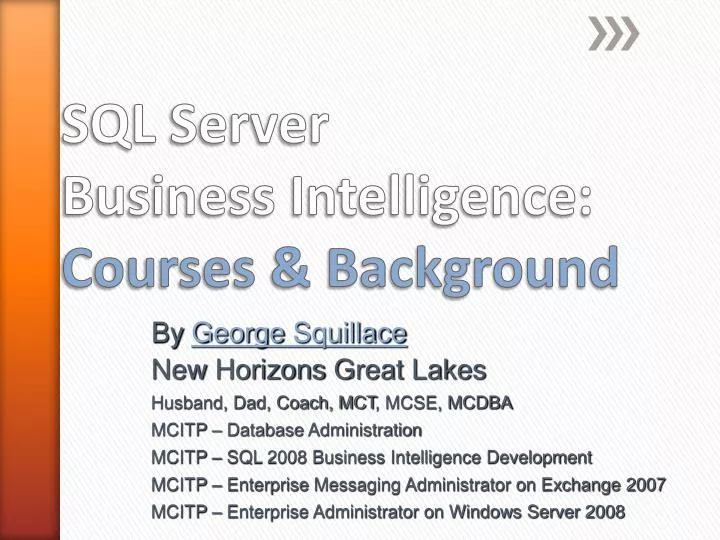
- SQL SERVER 2008 BUSINESS INTELLIGENCE TRAINING HOW TO
- SQL SERVER 2008 BUSINESS INTELLIGENCE TRAINING PROFESSIONAL
The first ten chapters of the book are about administering the various areas of SQL Server, including the developer and business intelligence features.
SQL SERVER 2008 BUSINESS INTELLIGENCE TRAINING HOW TO
Although this book does not cover how to query a SQL Server database, it does cover how to tune the queries you've already written. Instead, the author of the installation chapter may provide insight into how to use some of the more advanced concepts of the installation. For example, this book does not show you how to create a database or walk you through the installation of SQL Server using the wizard.
SQL SERVER 2008 BUSINESS INTELLIGENCE TRAINING PROFESSIONAL
This book is a professional book, meaning the authors assume that you know the basics about how to query a SQL Server and have some rudimentary concepts of SQL Server already. This book is intended for developers, DBAs, and casual users who hope to administer or may already be administering a SQL Server 2008 system and its business intelligence features, such as Integration Services. Administrators or DBAs support the production servers and often inherit the database from the developer. Oftentimes, they're responsible for creating the database tables and indexes.

Developers often have SQL Server on their own workstations and must provide guidance to the administrator about how they'd like the production configured. Whether you're an administrator or developer using SQL Server, you can't avoid wearing a DBA hat at some point. We've provided a comprehensive, tutorial-based book to get you over the learning curve of how to configure and administer SQL Server 2008.

SQL Server now enables you to manage the policies on hundreds of SQL Servers in your environment as if you were managing a single instance. Additionally, some of the new features in SQL Server are more developer-centric, and poor configuration of these features can result in poor performance. SQL Server administration used to just be the job of a database administrator (DBA), but as SQL Server proliferates throughout smaller companies, many developers have begun to act as administrators as well. It is no longer unheard of to have 20-terabyte databases running on a SQL Server. IMHO, it is better to follow AdventureWorks2008 "mindlessly" than create argumentative environment for the project team over NULLs, PK naming, date formats, db object prefixes and so on.SQL Server 2008 represents a sizable jump forward in scalability, performance, and usability for the DBA, developer, and business intelligence (BI) developer. Follow AdventureWork2008 and rules which are specific to your environments, that is an easy "sell".Ħ. If I am a team lead it is much easier to say follow AdventureWorks2008, than produce a standard and have everybody follow it in the years to come.ĭon't forget the arguments (just like here)!ĥ. Agreed, however, most databases are case insensitive.Ĥ. AdventureWorks circa 2005 - carefully & skillfully crafted by Microsoft staff, a very excellent training database.Ģ. pubs was inherited from Sybase circa A.D.

This is an excellent exercise because it requires one to think about why a given standard exists rather than just follow someone else's mindlessly.ġ. IMHO, it's fine to borrow someonce else's standards and guidelines as a starting point but I think it's critical to adapt those to one's particular environment.Ħ. Regardless of the standards one chooses, these must be documented and followed or there are no standards at all.ĥ. I would not name a column just "Name" as is pervasive in AdventureWorks and instead use Name as a class descriptor word at the end of the column name (e.g.

Proper case is something I like to avoid in a case-sensitive database so I would not use the AdventureWorks naming convention in a case-sensitive collation.ģ. One could say these same things about the pubs database.Ģ.


 0 kommentar(er)
0 kommentar(er)
